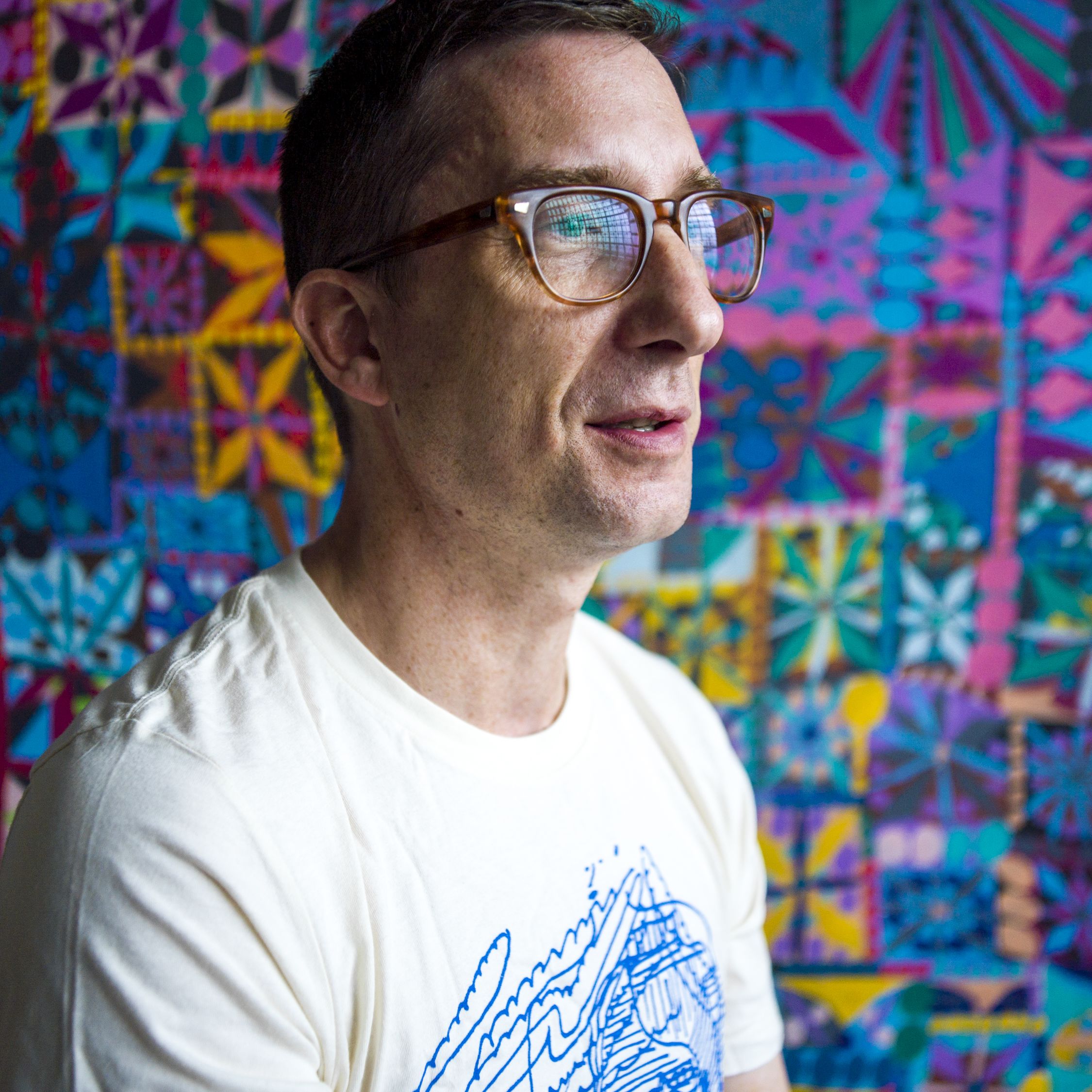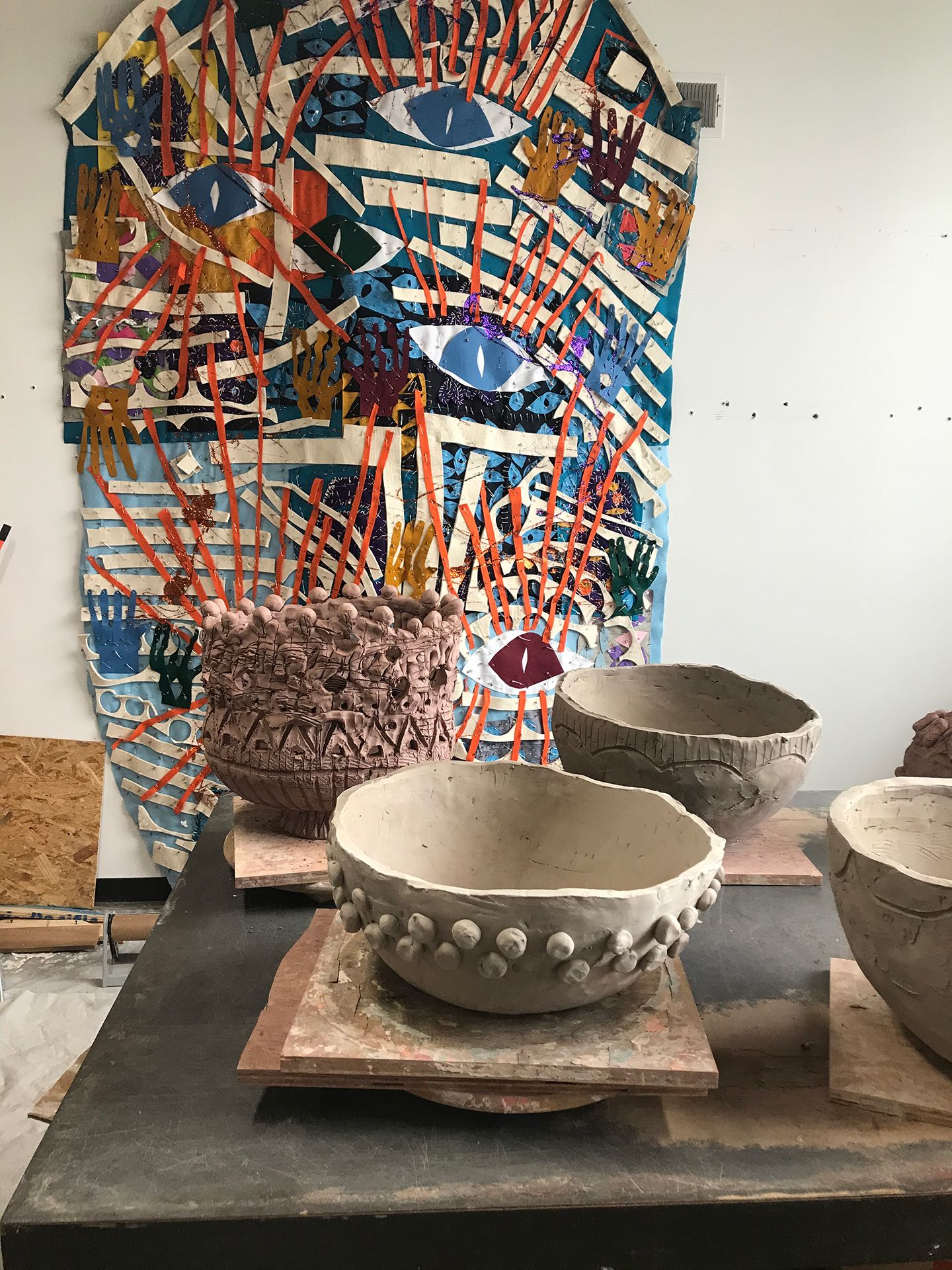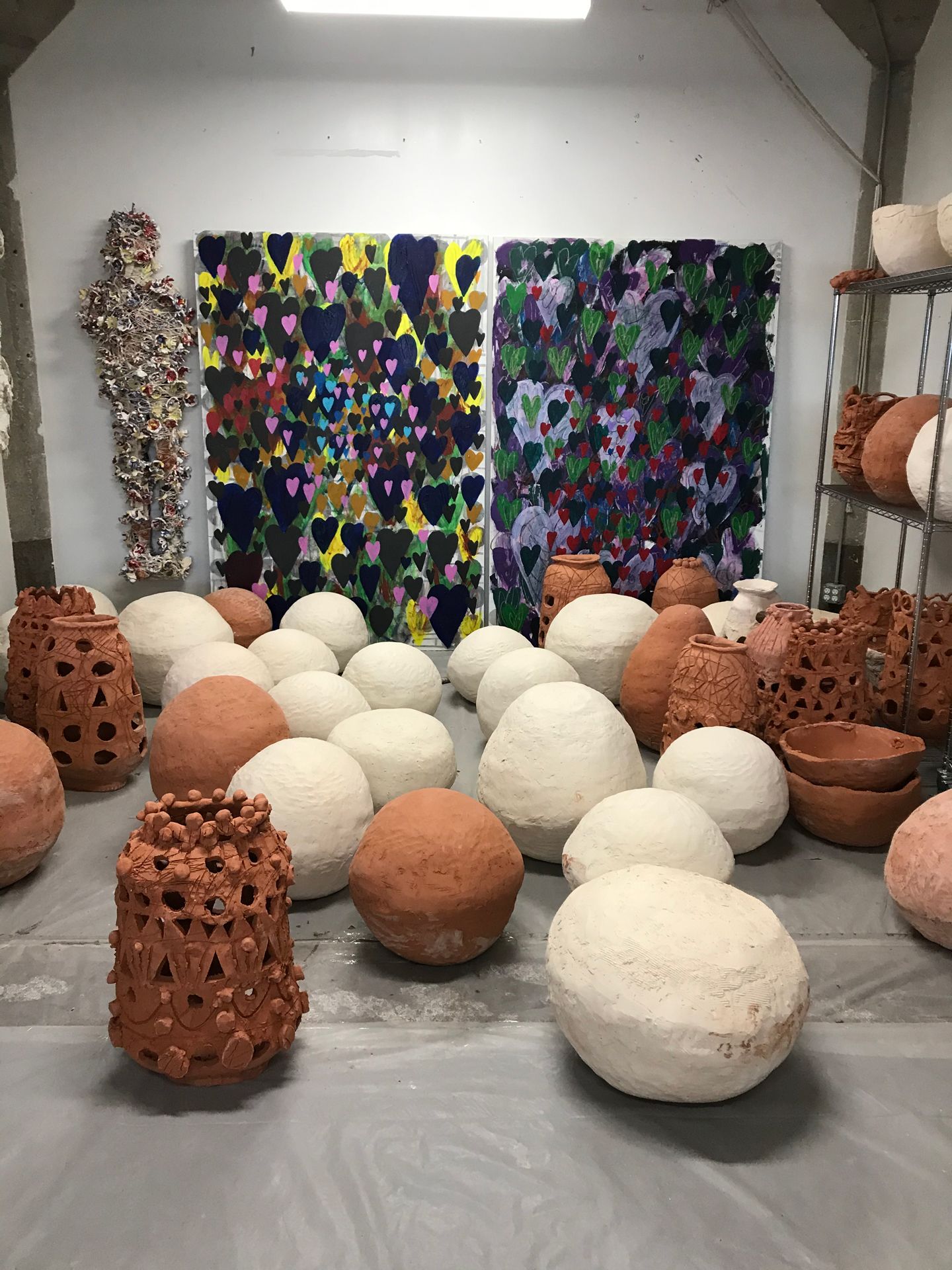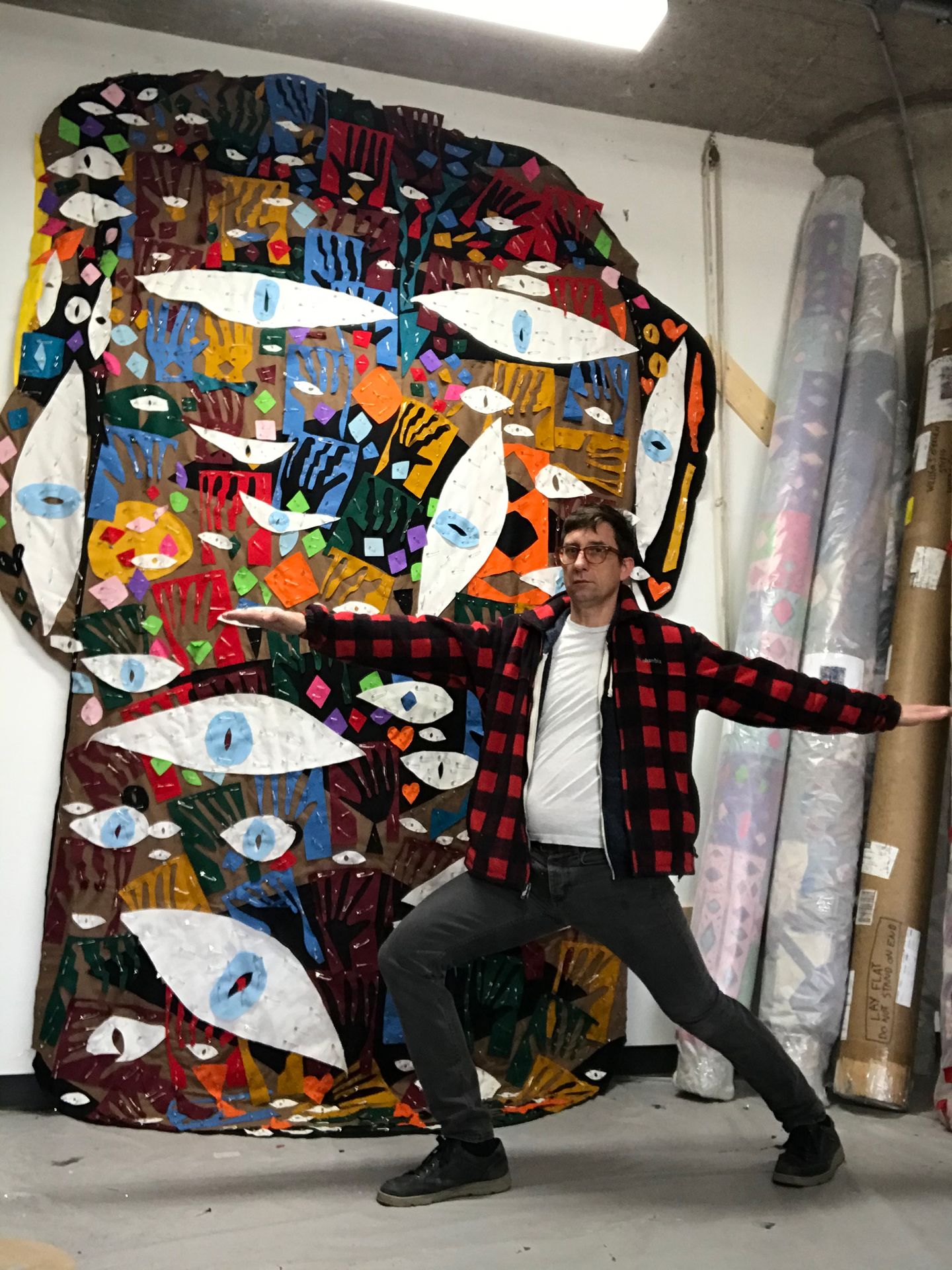The Process
William J. O’Brien (MFA 2005)

by Ben Kim Paplham (MFA 2021)
They’ve invaded the studio. One hundred clay objects that are not quite pots, somewhat resembling jack-o’-lanterns without their stem hats.
Pods—a new series from William J. O’Brien, an artist who has been working in Chicago since 1999 and is currently an associate professor of ceramics at the School of the Art Institute of Chicago (SAIC)—was created on the artist’s wheel. They have yet to find a permanent home, as O’Brien is still in the process of making all 100, so for now they live on clay-dusted work tables and portable metal shelves. They look like a potter’s hatchery, and O’Brien, laughing, admits that there might be a subconscious reference to H. R. Giger’s Alien designs buried underneath the work. But if that is how a viewer responds to these objects, then O’Brien doesn’t seem to mind. Above all, O’Brien finds joy in such things just existing.
“I love the absurdity of the pods and wondering why they exist,” O’Brien explained. “I think with sculpture there is a commanding presence that asks the audience to interact with it—sometimes that is honestly just abstract curiosity, surprise, or humor.”
This invocation of the unexpected is one way O’Brien hopes his art creates an intimate, safe environment for both the artist and the viewer. In a time where O’Brien feels many artists, even established ones, feel disenchanted with the value of their expression or voice, O’Brien advocates for processes of art making that give people confidence to work through their uncertainty. In the fall 2020 semester, he taught a class on the subject, titled Getting Weird and Hilarious, which he described as a means to “diffuse the performance anxiety that a lot of people feel about having to just make work.”
In his own studio, O’Brien strives to lessen stressors that inhibit his freedom and creativity. He uses inexpensive tools and leftovers, such as worn-down colored-pencil nibs or clay scraps. Most importantly, he takes the time to observe and listen to his materials. O’Brien considers the relationship to the materials he uses as a sort of visual sound. “I think different materials have different tones. Part of it is, What kind of music do I want the work to have? The pods are kind of a low tone, they’re quiet, even though they take up a physical space.”
“If discipline doesn’t exist within any practice, I don’t think it’s possible to reach any level of art making that’s playful.”
To create this music, O’Brien plays with his craft. Sometimes this improvisation or experimentation in the studio can be misunderstood as random chaos, but it’s a playfulness that adheres to discipline. This discipline can simply manifest through a daily routine: brewing tea, lighting his Tibetan Buddhist shrine, browsing the internet, practicing yoga, tending to his plants, taking 15-minute naps, and “fantasizing about what I want to eat for lunch or dinner.”
As O’Brien said, “If discipline doesn’t exist within any practice, I don’t think it’s possible to reach any level of art making that’s playful. You do need to establish a set of criteria or rules. Being consistent to those rules eventually opens you up so you can play.” ■

Work in O’Brien’s studio. Image courtesy of the artist, Marianne Boesky Gallery, New York, and Taka Ishii Gallery, Japan
Work in O’Brien’s studio. Image courtesy of the artist, Marianne Boesky Gallery, New York, and Taka Ishii Gallery, Japan

Work in O’Brien’s studio. Image courtesy of the artist, Marianne Boesky Gallery, New York, and Taka Ishii Gallery, Japan
Work in O’Brien’s studio. Image courtesy of the artist, Marianne Boesky Gallery, New York, and Taka Ishii Gallery, Japan

O’Brien in his studio. Image courtesy of the artist, Marianne Boesky Gallery, New York, and Taka Ishii Gallery, Japan
O’Brien in his studio. Image courtesy of the artist, Marianne Boesky Gallery, New York, and Taka Ishii Gallery, Japan

